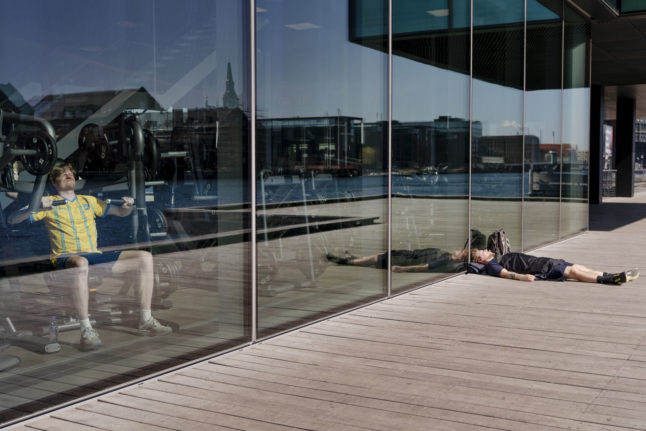New charges for Dankort vendors
A new charge for using the country’s Dankort card payment system takes effect in stores on April 1st.
Nets, which owns the Dankort network on which most bank payment cards in Denmark operate, is set to introduce an additional 8.9 percent charge for businesses which accept Dankort from the beginning of next month.
Although it’s businesses, not customers, which have to pay the charge, the additional cost is likely to end up with customers anyway, according to an interest organisation for shopkeepers in Denmark.
Nets has said it needs to increase the charge because of the lower number of transactions being made with Dankort, and has called for more banks to make their Dankort cards compatible with Apple Pay and Google Pay to redress this.
READ ALSO: Dankort: What is Denmark’s payment card and how is it different from other card types?
Tax rebates to be paid out
Denmark’s tax authority SKAT opened access to annual tax returns on March 11th.
Annual tax returns (årsopgørelser) in Denmark cover calendar years. They are released in March and finalised in late spring, meaning taxpayers have this period to correct the information on their tax returns from the previous calendar year.
The returns account for income over the preceding tax year as well as deductions and taxes paid.
Normally, around three in four people receive money back from the tax authorities once the return is finalised. The amount paid back varies and depends on individual circumstances.
Rebates from the tax system will be automatically paid back in 2023 from April 15th onwards, so if you have already logged in and completed your annual return (or do it soon) you could receive any money due in April. In some cases, it may take longer for the tax authority to pay out rebates.
READ ALSO:
- How you can access (and edit) your 2024 Danish tax return in English
- EXPLAINED: How does Denmark’s tax deduction for commuting work?
- Five ways to (legally) lower your tax bill in Denmark
Change to child support rules for Ukrainians
A change to the special law for Ukrainian refugees, in effect from April 1st, means that a person granted residency in Denmark under the law and who is married and lives with their children but without their partner, because the partner is in Ukraine, can be consider a de facto sole provider and receive child support payments.
This applies if you are married and live alone with your child in Denmark, and your spouse is in Ukraine.
Applying for the benefit before the end of March will ensure you can receive it from April 1st, the date the change takes effect.
Further information and the application portal can be found via residence permit agency SIRI’s website, as well as on the Borger.dk platform.
Easter holidays
The Easter holidays have fallen early this year but just about make it into April.
The school Easter break started on March 25th for most schools (although this can vary locally, depending on when the municipality decides to place the school holiday).
“Easter week” in 2024 is the last week in March, with Palm Sunday, technically a public holiday, falling on Sunday March 24th. The remaining Easter public holidays fall at the end of the week: Maundy Thursday on March 28th, Good Friday on March 29th, Easter Sunday on March 31st and Easter Monday on April 1st.
Some people will have the entire week off to match up with schools, but even those who don’t will enjoy a five-day break from work which just about lasts into April (unless their job requires them to work holidays).
READ ALSO: Everything you need to know about travel to, from and in Denmark this Easter
Switch to summer tyres
Alternating between winter and summer tyres is not a legal requirement in Denmark, but is broadly recommended, including by FDM, the Danish membership organisation for motorists.
Neighbouring Sweden, Norway and Germany – where many Danish residents head on skiing and other holidays during the colder months – all have rules requiring winter tyres and the practice is common in Denmark, not least for those who may need to take their cars over the border.
Most people switch back to summer tyres at Easter, which this year falls on March 31st, with the ‘Easter holidays’ being the week leading up to this (plus Easter Monday April 1st).
The weather in late March has carried plenty of signs spring is on the way, so the Easter weekend could be a good time to switch tyres despite it falling relatively early this year.
More about the practice of using winter and summer tyres in Denmark can be found in this article.
‘Organic Day’ as cows let out of barns
Økodag or “Organic Day”, when organic farms release cows from their winter enclosures, takes place on April 14th. The day features farms opening to the public from 10am and the cows being released at noon.
Farms across Denmark open for the occasion – you can look up a location near you on the Økodag website and book a place (many farms sell out).
The annual event has taken place since 2005, with the public invited to watch as the animals roam enthusiastically onto the spring grass, often appearing to jump with joy.
Tens of thousands of people across the country typically attend the event.



 Please whitelist us to continue reading.
Please whitelist us to continue reading.
The article is missing the abolition of storebeddag from 2024